
As part of the 2020-2023 Farm Safety Action Plan, the Farm Safety Partnership will concentrate on specific 'Farm Safe Essentials', aimed to reduce the number of serious and fatal incidents relating to frequently recurring causes.
These key actions which every farmer should employ to protect themselves and others from the situations which have tragically led to death and serious injury, will be highlighted on this page during the course of this plan.
We encourage those working on farms to take these simple precautions in order to prevent injury and death and to embed that behaviour in future working practices:
#8 SEPARATE STOCK & SLURRY
Get animals out before mixing
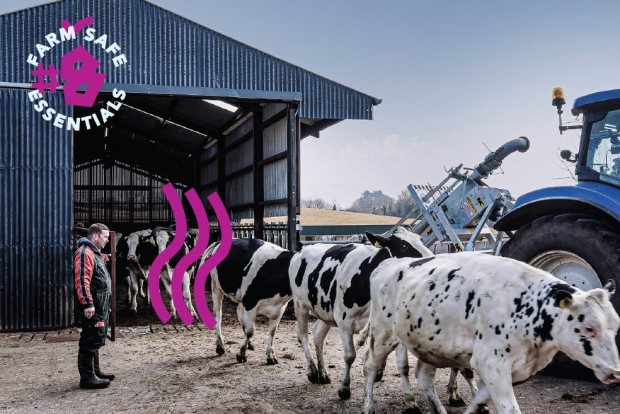
Many slurry incidents have occurred when farmers have entered sheds during mixing operations to rescue livestock which have been overcome by slurry gas.
- Farmers should remove ALL livestock from the shed before mixing operations start.
- NEVER rely on moving livestock from one side of a shed to the other or closer to the doorways or openings of a shed when mixing.
- PLAN AHEAD! Use well placed gates in laneways, the yard or fields to contain animals which are removed from the shed if they are being kept in batches.
- Make sure that NOBODY ELSE enters the shed during mixing and keep children and other animals away.
- ALWAYS follow the safe slurry mixing code.
Useful links:
#7 STACK BALES SAFELY
Don't let them be your downfall
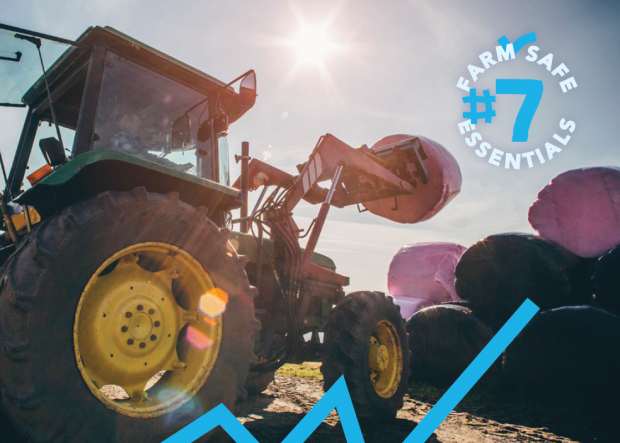
Fatal and serious accidents have occurred from work activities associated with stacking bales where bales have either collapsed and fallen on the farmer or when farmers have fallen from stacked bales.
- Any equipment used to stack bales must be suitable for the job,
well maintained and used in accordance with manufactures guidance. - The bottom of any stack should set up a sturdy foundation for all additional bales.
- Bale stacks should only be built on firm, dry, level ground and away from any overhead power lines (OHPL).
- Make sure that bales are ‘tied in’, ie stacked so that lower supporting bales are stabilised by overlapping and interlocking upper bales in alternating layers.
- Check bale stacks regularly to make sure they remain in good condition with no danger of collapse.
- Children MUST NOT be allowed to play on top of stacked bales or use the stack as a play area/den.
- Provide sufficient space around the stack to allow tractors, trailers and other vehicles adequate room to manoeuvre.
Other useful links:
- Safe working with bales in agriculture (pdf format) - HSE (GB)
- Working safely with bales on the farm (pdf format) - HSA
#6 CALVE WITH CARE
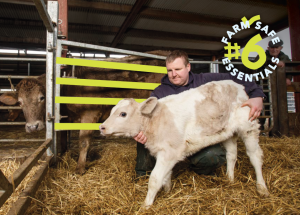
Never turn your back on a cow during calving
- ALWAYS be aware, watch for warning signs of animal aggression, especially in cows and heifers around calving time.
- PLAN an escape route or refuge in advance of handling livestock.
- Farmers MUST have adequate handling facilities for calving.
- Try to have help available when calving OR let someone know where you are AND carry a mobile phone in case of emergency.
- ALWAYS keep children away from calving activities.
- NEVER stress or arouse cattle unnecessarily.
- NEVER turn your back on a cow or heifer around calving time.
- Be particularly careful when animals are returned to the field after they’ve been housed indoors for long periods.
- Aggressive and difficult cattle should be culled as soon as possible.
Other useful links:
- Animals - safety around calving time
- Plan an escape route and never turn your back on cow during calving - www.youtube.com
#5 QUADS NEED CAUTION
Misuse of Quads can kill

- When using an All-Terrain Vehicle (ATV) or quad for farm work you MUST be adequately trained.
- Anyone using a quad MUST be within the manufacturers recommended age range, the minimum age for use of a farm type quad is usually 16 years old.
- If driving a quad on the public road you must have a driving licence, appropriate insurance and road tax and the quad must be in a roadworthy condition.
- Most quad bikes are not designed to carry a passenger, NEVER carry a passenger unless the quad is designed to do so.
- ALL quad bikes MUST be adequately maintained.
- ALWAYS wear a suitable helmet when riding a quad bike.
- Wear appropriate clothing such as sturdy boots, something which is strong and covers your arms and legs, goggles or a visor and gloves.
- Take extra care when operating quads on slopes and rough terrain – never exceed the capabilities of the bike.
- DO NOT undertake tasks that interfere with safe riding - keep both hands on the quad handle bars.
Other useful links:
- Quad bike safety
- Safe use of all terrain vehicles (ATVs) in agriculture and forestry (pdf format) - HSE (GB)
- European ATV Safety Institute website (www.quadsafety.org)
- The British Off Road Driving Association (www.borda.org.uk)
- College of Agriculture, Food and Rural Enterprise website (www.cafre.ac.uk)
- Introduction to the Highway Code (www.nidirect.gov.uk)
- Riding quad and scrambler bikes (www.nidirect.gov.uk)
#4 STAY OFF ROOFS
Don't let roofs be your downfall
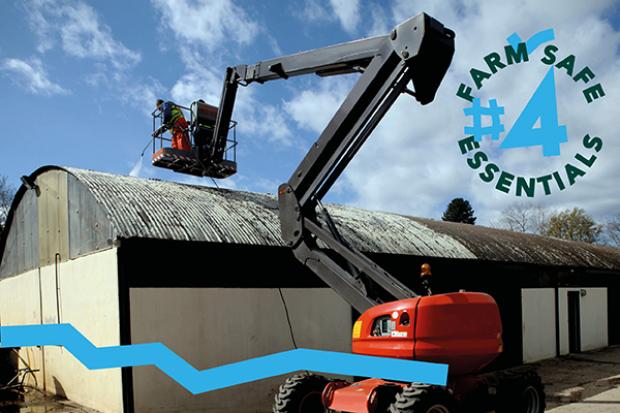
- All work at height MUST be planned AND fragile surfaces identified by a competent person
- Anyone undertaking work at height MUST be adequately trained and competent to do the job
- Any equipment used for working at height MUST be suitable for the job
- Equipment MUST be adequately maintained with relevant safety checks completed by a competent person
- Any person operating this equipment MUST be familiar with the equipment AND trained to operate it
- All leading edges must have suitable and sufficient protection to stop people falling from height both internally and externally
- Mobile Elevated Working Platforms (MEWPS) (e.g. scissor lifts or cherry pickers) are the preferred method for working at height if a scaffold platform cannot be erected
A short promotional video for this message can be viewed and shared on our YouTube channel at the following link:
Other useful links:
- Falls - working safely at height on farms
- Preventing falls from height
- Building a new farm building or renovating an existing farm building - guidance note
- Health and safety in roof work - HSE (GB)
- Roof work - HSE (GB)
- Working at height - a brief guide - HSE (GB)
- Working platforms (non integrated) on forklift trucks (pdf) - HSE (GB)
#3 GIVE SLURRY SPACE
Slurry gas: One breath can kill

- Leave the shed IMMEDIATELY once mixing starts
- Stay out of the shed for AT LEAST 30 MINUTES from the start of mixing
- Never go into the shed to check if the tank is mixing properly or to redirect the pump until AT LEAST 30 MINUTES has passed
- If the pump is repositioned restart the pump and leave the shed IMMEDIATELY, stay out of the shed for AT LEAST ANOTHER 30 MINUTES as more pockets of gas may be released
- Make sure that NOBODY ELSE enters the shed during mixing and keep children and animals away
- ALWAYS follow the safe slurry mixing code
A short promotional video for this message can be viewed and shared on our YouTube channel at the following link:
Other useful links:
#2 PLAN SAFE SPACES
Don't be caught out by a bull
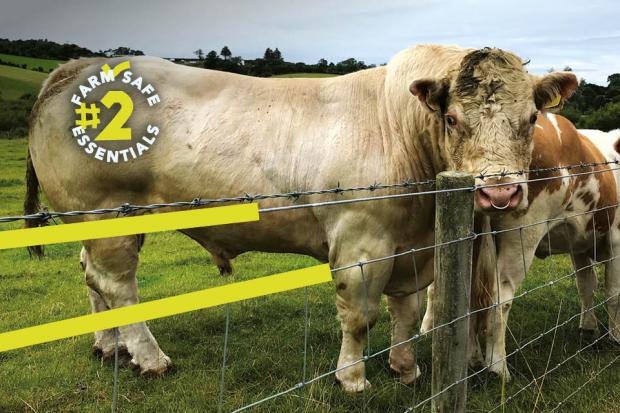
- NEVER trust a bull, ALWAYS stay alert
- ALL breeds of bull are dangerous and can kill
- ALL bulls should be ringed from 10 months old, NEVER ring your own bull
- If a bull shows ANY signs of aggression the farmer MUST cull at the earliest opportunity
- A purpose built bull pen is ESSENTIAL for dairy bred bulls
- Farmers MUST have adequate handling facilities for their bull
- Never let the bull into the milking parlour with the cows
- When working with a bull work in pairs OR let someone know where you are AND carry a mobile phone in case of emergency
- When checking livestock and a bull in a field use a vehicle which can act as a refuge in case of emergency
- ALWAYS plan an escape route
A short promotional video for this message can be viewed and shared on our YouTube channel at the following link:
Other useful links:
- Never trust a bull
- Animals – Working safely with livestock
- Safe handling of livestock on farms
- Get help when working with animals – Safety for farmers
- Handle cattle safely Part One - Theory based seminar by Miriam Parker - source YouTube
- Handle cattle safely Part Two - Practical Workshop by Miriam Parker - source YouTube
#1 CHECK YOUR BRAKES
No brakes, no chance
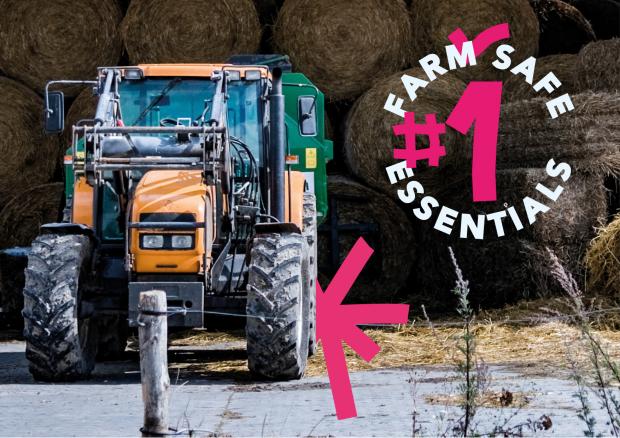
- Brakes and handbrakes MUST be in good working order. Follow the service schedule or advice from an agricultural engineer
- Check your foot brake and hand/parking brake daily
- When stopping vehicles ALWAYS apply the hand/parking brake and use the safe stop procedure
- Machinery SHOULD be fitted with brakes designed for the load and speed at which they will be used
- Trailer brakes MUST be maintained, and where possible be linked to the tractor braking system to operate automatically when the tractor brakes are applied
- NEVER use un-braked trailers on sloped ground
- Where independent braking is not required ensure the brake pedal latch is in place and the brakes are not pulling to one side. Brakes must always be linked on the public road.
A short promotional video for this message can be viewed and shared on our YouTube channel at the following link:
Other useful links:
- Tractor Action
- Trailer Action - Trailer Safety Checklist
- Equipment - Working safely with farm equipment and vehicles web page
- Safe Stop - Using machines safely (HSE GB)
Farm Safe Essentials Press Adverts
Click on the link below to view our Press Adverts in relation to the 4 topics above:
